
The king of sports cars is better than ever.
Torquecafe.com takes an exclusive look at the 2019 Porsche 911 Carrera 4S.
CLICK HERE FOR AN EXTENDED IMAGE GALLERY
What is it?
The latest in a long line of sports car kings. The Porsche 911 is the benchmark by which all other sports cars are measured and even in its eighth generation the German giant is still finding ways to make it better.
To the untrained eye it may look similar to the model it just replaced but Porsche claims this latest 911 (codename 992) is 80% new. Of course it still retains the familiar silhouette and mechanical layout, but every aspect of the car has been honed and fine-tuned to produce what the company calls “our icon.”
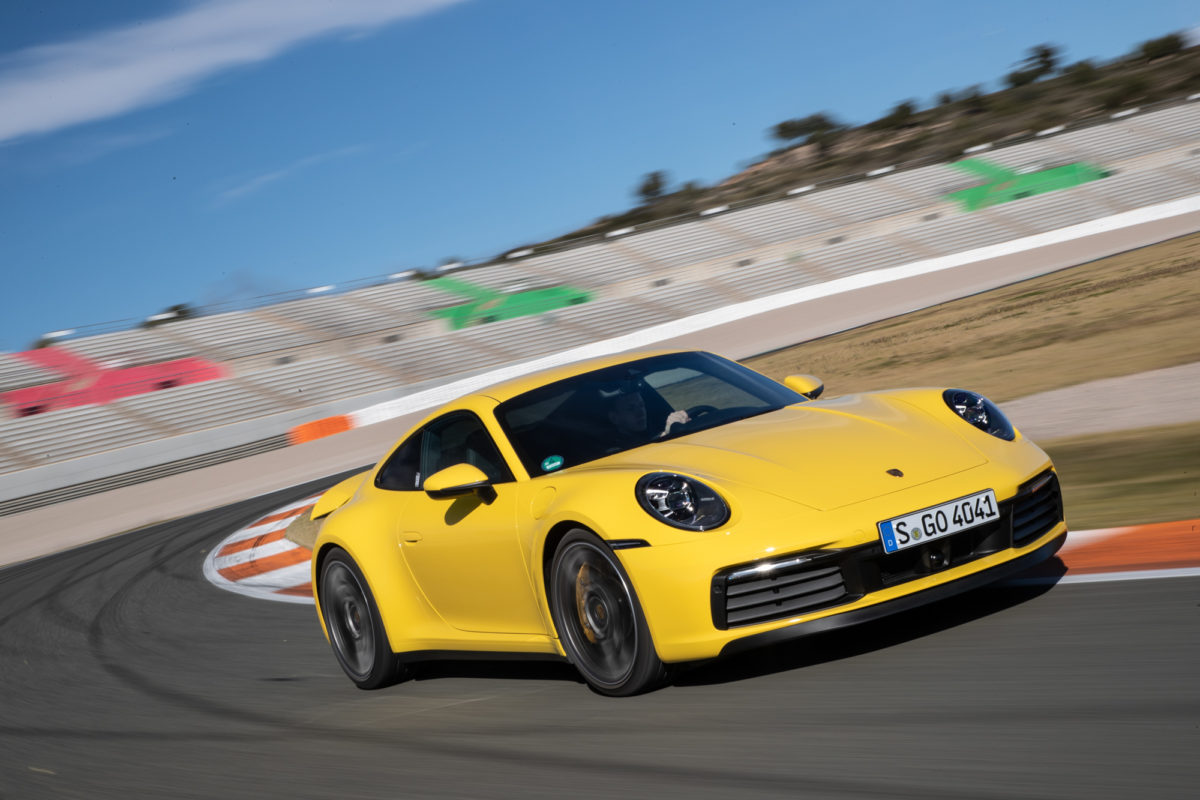
Does it have any racing pedigree?
Porsche generally, and the 911 specifically, are steeping in motorsport heritage. Few cars can lay claim to the kind of road/race crossover that the 911 enjoys. The 911 GT3, for example, is the basis on which the Carrera Cup racing cars are formed.
We’re testing the Carrera 4S model (which means it features all-wheel drive and the more powerful engine variant) which isn’t quite as pure as the naturally-aspirated, rear-wheel drive GT3 and Cup cars but is nevertheless right at home on a racetrack.
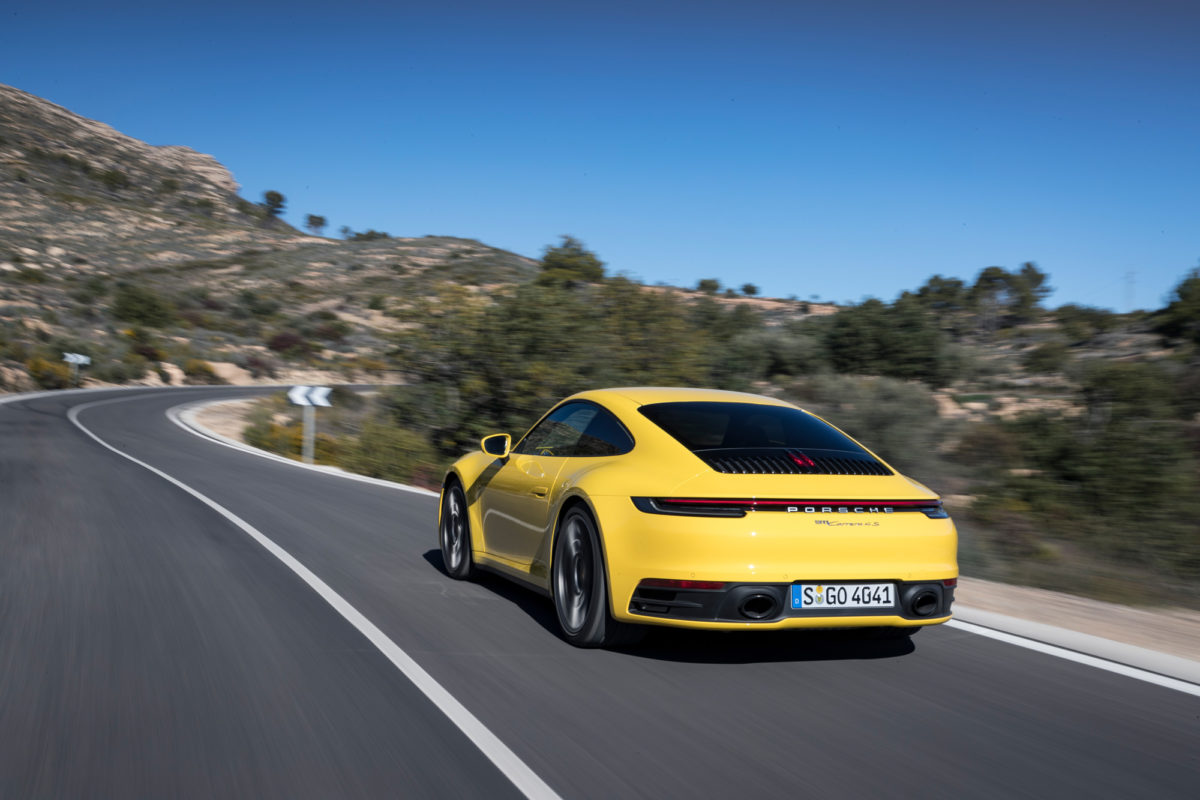
What’s under the bonnet?
The seventh-generation 911 (codename 991) underwent one of the most significant changes in the history of the 911 – introducing a new 3.0-litre turbocharged six-cylinder engine to the Carrera range in 2016. It meant the end of the brand’s famous naturally-aspirated boxer engines that provided the motivation and soundtrack that made the 911 the icon it is today.
(Yes, there has been a 911 Turbo since 1975, but that was different, it was the flagship model that deliberately turned everything up to 11. For purists the sweet, linear performance of the old flat-six was as close to automotive perfection as many had experienced.)
But progress waits for no-one, not even Porsche and the move to a turbocharged engine was done primarily for fuel economy and emissions regulations. On paper the benefits are clear, in the real world less so. In fact, the 911 still drinks like you’d expect a potent sports car to drink, typically hovering in the low teens, when the combined cycle average is 9.0-litres per 100km.
But really, who cares? If you’re worried about fuel economy stop looking at a 911 – go and buy a Toyota Prius.
The 911 is a sports car so it’s performance that matters, and on that front the latest Carrera 4S delivers in spades. The twin-turbo flat-six has been upgraded from the 991 version, adding more power and torque. It pumps out 331kW of power at 6500rpm and 530Nm of torque at 2300-5000rpm. The engine is paired to an all-new eight-speed dual-clutch automatic transmission (or PDK in Porsche-speak) that sends the power to the road via Porsche’s all-wheel drive system in the Carrera 4S.
While I still miss the old naturally-aspirated 911s there’s no doubt Porsche has done a brilliant job with the turbocharged engine. It’s almost as smooth and linear as before, with only the slightest hint of turbo lag at times, but with the added benefit of more pulling power from low down in the rev range.
It’s also easy to drive, never feeling temperamental or highly-strung the 911 is the kind of sports car you could drive to the shops everyday. But, put your foot down and the 911 launches with all the ferocity you expect from a pure-breed sports car. The engine has awesome punch from right down low in the rev range and it keeps pulling hard all the way to 6500rpm.
All the while it makes a wonderful noise, despite the introduction of the turbos that might ordinarily strangle the exhaust note Porsche has managed to tune this engine to maintain that unique flat-six sound that is so beloved.
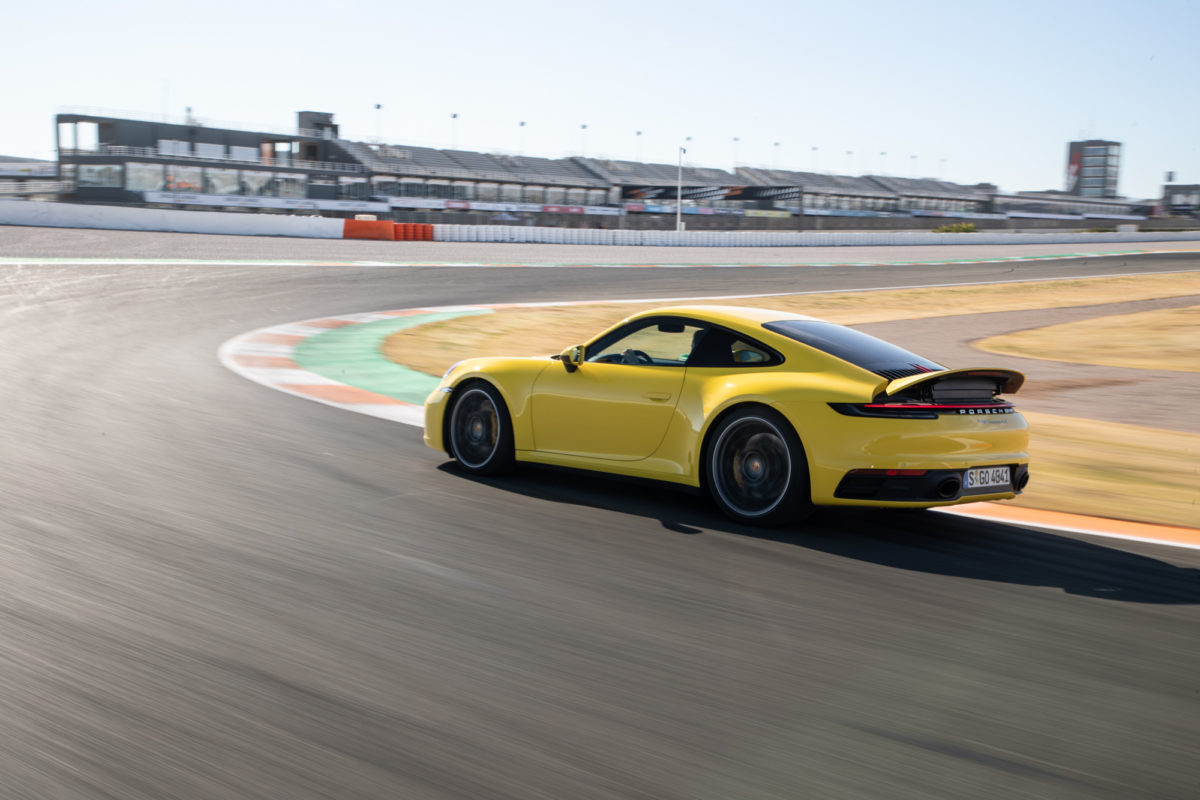
How does it handle?
The irony is, while the new 911 feels faster in a straight line than ever before, the car has always been more at home in the corners. So, unsurprisingly, that’s where this latest 992 really shines.
In truth, Porsche designed a fundamentally flawed car with the original 911 – the engine shouldn’t be mounted in the back. But the company has spent 70 years perfecting this imperfect sports car to the point where it simply cannot be matched.
Porsche introduced a wider track for this new generation, better improving front grip and responsiveness, while also adding the option of rear-axle steering – which our test Carrera 4S had fitted for $4,730.
The result on the road is a car you will not want to stop driving. From the shops to work to a racetrack, there is nowhere the 911 doesn’t feel in control.
The steering is fantastic – direct, linear and full of feedback to the driver. It makes you feel connected with the car, which should be the goal of any great sports car.
The grip provided by the huge wheel and tyre package (20×8.5-inch rims with 245/35 rubber up front and 21×11.5-inch with 305/30 on the rear) mean the 911 sticks like glue even when pushed hard through the corners.
As the driver it gives you tremendous confidence and enjoyment to be able to push such a capable machine. This is a car that makes an average driver feels special, whilst also having the ability to really challenge and reward a good driver.
Where would you most like to drive it?
Mt Panorama. This new 911 could stretch its legs running up Mountain Straight and down Conrod, but it would feel so impressive over the top of the hill.

What’s the interior like?
Porsche has managed to carefully walk the fine line between taking inspiration from the past, whilst simultaneously keeping the new cabin utterly modern. Too often car companies go retro inside with disappointing consequences, often focusing too much on the old days at the expense of practicality and good design.
The latest 911 has some trademark design cues, most notably the large round tacho in the centre of the instrument panel. But, in a nod to modern times, it’s flanked by two digital panels that can provide a variety of virtual dials or other information – including the sat-nav map.
In a nod to the 1970s era 911s the centre fascia has two strong vertical lines running across its full width, which allows for a neat recess for the widescreen infotainment display.
Between the front seats is a more modern looking sloping panel that houses the majority of the controls, including the stumpy gear selector – which does take some getting used to.
But one of the most important new additions to the cabin is a fix for arguably the old 911s biggest flaws – the cupholder! Previous 911 have relied on cupholders that swing out from the passenger-side of the dashboard, which were too shallow and not sturdy enough. Thankfully this new model gets a more solid beverage receptacle that will no doubt make life a lot easier for owners!
Is it good value for money?
In all honesty, the cupholder was probably the old model’s second biggest problem. The real issue with the 911 is the price – or at least the value argument.
The 911 range begins at $229,500 (plus on-road costs) which is a good price for a great car. Our 911 Carrera 4S starts at $281,100, which is again reasonable for the performance it offers. However, our test car was loaded with expensive options – $6750 Porsche Dynamic Chassis Control Sport, $5480 sports exhaust, $4890 Sport Chrono Package, $2850 adaptive sports seats and even $930 for yellow seat belts. In total our test car was $326,050 which is a long way from the list price.
Also, those options are pretty desirable and should arguably come included on a high-performance sports car – most notably the sports exhaust. And personally, I’ve never driven a Porsche that wasn’t fitted with the Sport Chrono Package. Perhaps Porsche Australia needs to take another look at its standard features list and adjust prices accordingly – I mean, $4890 isn’t going to stop you buying a $300k car but it would be nice if they were more upfront about it.
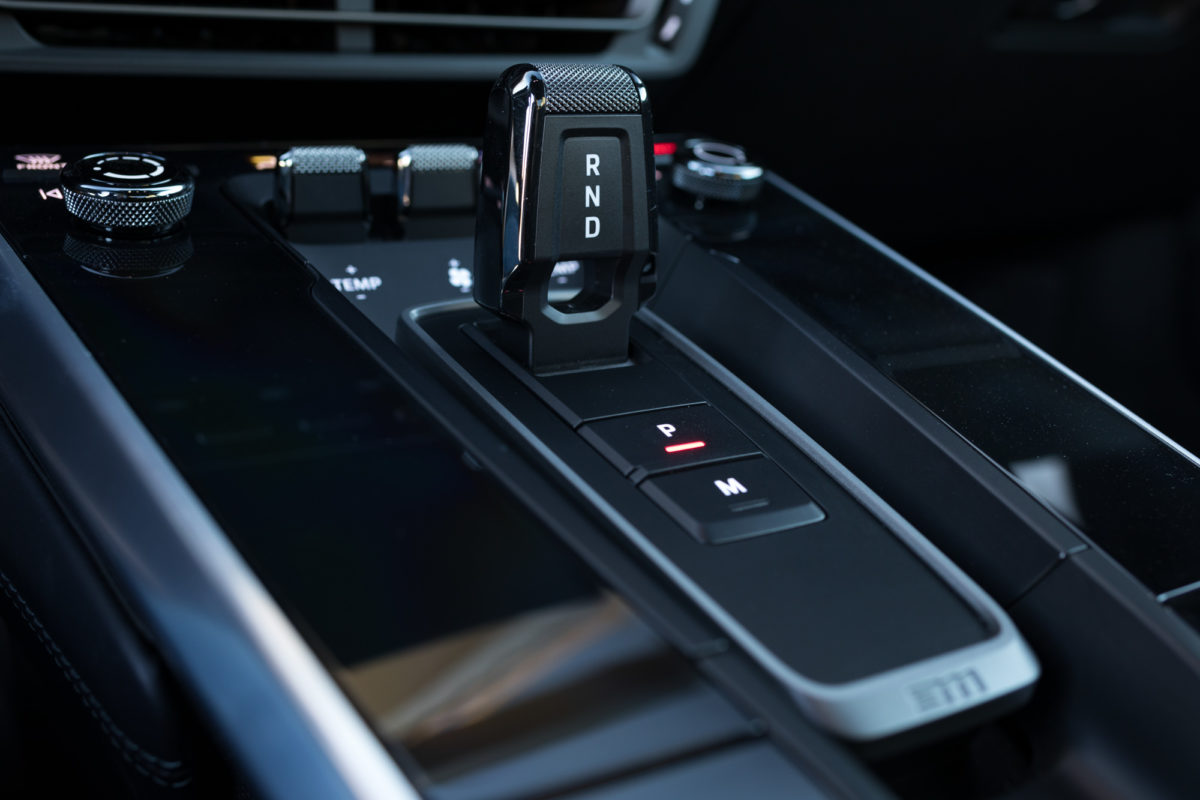
Would I buy one?
In a heartbeat. There’s a reason why this is the sports car king. It does everything you expect from a performance car – ferocious acceleration, razor-sharp handling, head-turning looks – but it’s wrapped up in a comfortable and practical package. Even after eight generations Porsche is still finding ways to make the 911 better.
The king is dead. Long live the king.
2019 Porsche 911 Carrera 4S price and specifications:
| Price: | From $281,100 plus on-road costs |
| Engine: | 3.0-litre twin-turbo six-cylinder |
| Power: | 331kW at 6500rpm |
| Torque: | 530Nm at 2300-5000rpm |
| Transmission: | Eight-speed dual-clutch automatic |
| Fuel use: | 9.0L/100km |
| Wheels: | 20×8.5-inch front; 21×11.5-inch rear |
| Tyres: | 245/35 ZR20 front; 305/30 ZR21 rear |
| Length: | 4519mm |
| Width: | 1852mm |
| Height: | 1300mm |
| Weight: | 1565kg |
| 0-100km/h: | 3.4sec (claimed) |



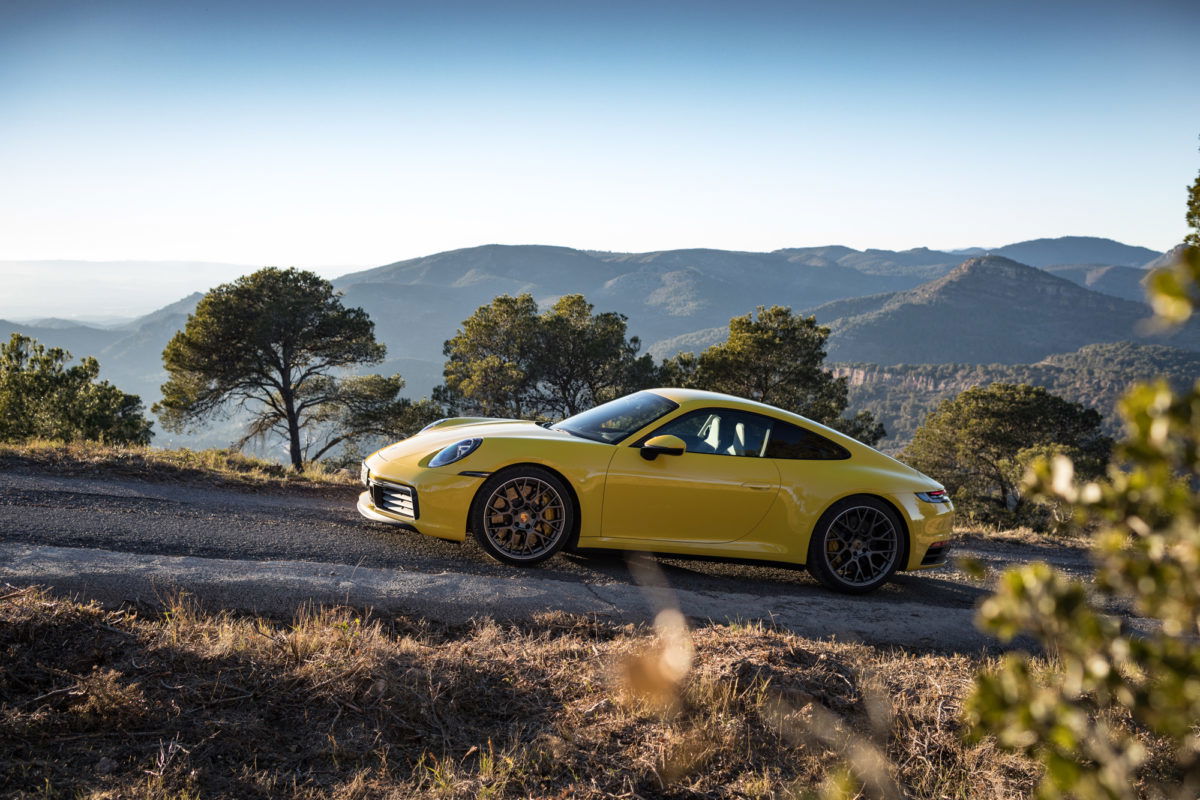









Discussion about this post